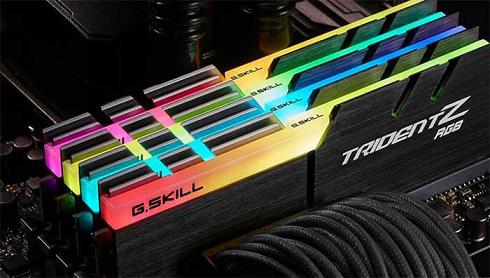DRAM prices will continue to slide in the coming year and there is little chance for Chinese company
The soaring prices of DRAM chips finally start to fall in October. The average prices of mainstream 4GB modules drop to $31 from $34.5 in last quarter, with a 10.14% decline and 8GB memory modules drop by 10%. Although Samsung, SK Hnnix and Micron try to maintain the high prices of memory by cutting capacity investment, once the price reduction starts it never stops. As to the memory prices trend, the president of Transcend, Peter Shu mentioned that, DRAM was facing the glut problem as well as NAND flash memory and the prices would continue to slide in the coming year, during the interview. In addition, he said startups in mainland China had little chance to have a place in DRAM market in a couple of years, but NAND manufacturers were hopeful to be part of the industry in 2019 and 2020.

According to Digitimes’ report earlier, the president of Transcend, Peter Shu, expressed some views about global memory and flash memory industry. He said, there were glut both in DRAM and NAND flash memory industry, and DRAM prices still had space to fall in the next year or a longer period. Compared with NAND flash memory are, there were fewer suppliers in DRAM area, so the falling price trend of DRAM would be more moderate than NAND flash memory chips.
Peter Shu said NAND flash memory manufacturer greatly enhanced technology yield of 3D NAND flash memory, which ratcheted up the downward pressure of NAND flash memory prices. Meanwhile, it contributed to accelerate the speed of SDD.
Due to the 3D TLC flash memory boom, Peter Shu said 512GB SSD prices were more closer to mainstream HDD prices. It was predicted to drop to between $45 and $50. He believed SSD was taking the place of HDD to become the mainstream storage device.
Perter Shu also mentioned the impact of companies in mainland China getting into memory and flash memory market. He believed domestic DRAM startups had little chance to take a place in DRAM market in a couple of years. But those startups whose headquarters were in China would become part of the industry in 2019 and 2020.
Talking about Sino US trade war, Perter Shu said all the main production lines had been removed to Taiwan. The company had been kept optimizing the production in Taiwan in last two years and used new production equipment to replace quondam production lines.
As to the future of Transcend, Peter Shu said they would put emphasis on industry and other niche market rather than mass market. It was predicted that the main growth momentum of Transcend would be in embedded devices.
